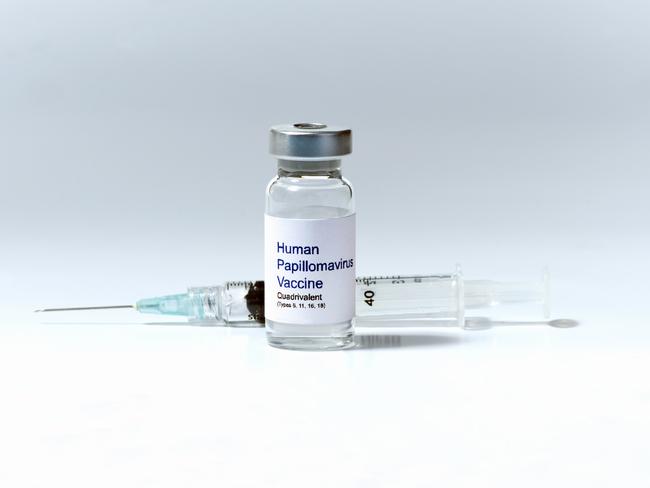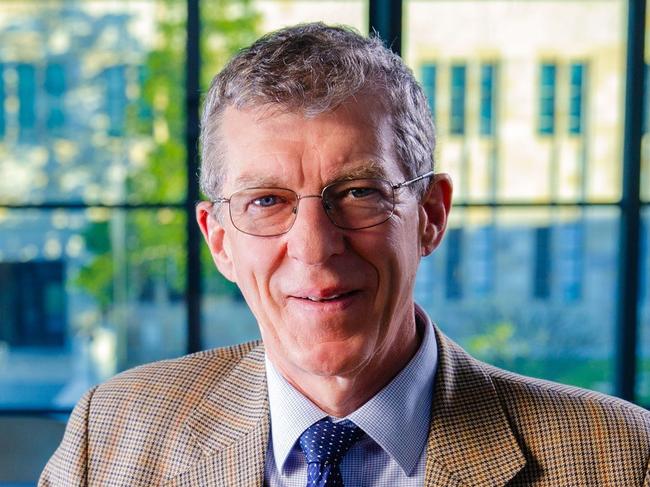Cervical cancer could be eliminated by vaccines and Australia leads way in push
Cervical cancer could be eliminated worldwide by 2100 and Australia is on track to be the first country to do it.
Illness
Don't miss out on the headlines from Illness. Followed categories will be added to My News.
The worldwide elimination of cervical cancer is on track for 2100 if vaccination and screening programs against the disease can be scaled up quickly a new report says.
Cancer Council NSW in partnership with the International Agency for Research on Cancer has mapped what would happen if 80-100 per cent of the world’s young girls are vaccinated against the disease and then screened for it twice in their lifetime.
It found such a program would avert 12.5-13.4 million cervical cancer cases over the next 50 years and average cervical cancer rates would fall to elimination thresholds of less than four cases per 100,000 people, by the end of the century.
“This is the kind of news that every cancer researcher lives for,” said Cancer Council NSW research director Professor Karen Canfell.
“It’s incredibly exciting for women all over the world. However, we are only in the early stages of the push towards elimination, as implementation efforts towards achieving global scale-up of vaccination and screening have just begun,” she said.

To date only one disease, smallpox, has successfully been eliminated by a vaccination program, the last known case was in the US in 1949.
We are close to eliminating polio with just 29 cases reported worldwide last year.
Cancer Council researcher Kate Simms said cervical cancer cannot be eliminated in the same way — so that there will not be a single case — because the vaccine only covers 90 per cent of the viruses that cause the cancer.
However, she says it could be eliminated to point where it was no longer a public health problem.
Last year researchers revealed Australia is on track to be the first country in the world to eliminate cervical cancer as a result of a nationwide free vaccination program for male and female teenagers.
If vaccination and screening coverage are maintained at their current rates, this target is set to be reached by 2035 in Australian women.
However, vaccination rates will have to improve in developing countries if the goal of eliminating the disease worldwide is to be achieved.
“Just over 30 per cent of young females in developed countries have received the HPV vaccine. When you consider that this figure dips below 3% in less-developed regions, you can see just how far we have to go,” says Cancer Council NSW research director Professor Kare Canfell.
Over the next 50 years, 44.4 million cervical cancer cases are predicted to occur and more than eight in ten of these occur in less-developed regions.
“These countries must be our first priority for implementation of high coverage cervical screening and HPV vaccination programs,” Professor Canfell said.
Cervical cancer is the fourth most common cancer in women worldwide and the leading cause of cancer death in some of the world’s poorest countries in sub-Saharan Africa.
Australian researcher Professor Ian Frazer developed the cervical cancer vaccine which protects against the human papilloma virus that causes the cancer.

In Australia the vaccine is given to most girls through a school based program that began in 2007, the program was extended to boys in 2013.
In addition women who have had the vaccine must be screened for cervical cancer at age 25 and then every five years, if no high risk HPV is detected
Cervical cancer rates among women aged 18-24 have plunged from 22 per cent to one per cent as a result of the program.
The vaccine originally protected against four types of Human papilloma virus but has since been improved and from 2018 covered nine strains of the virus which cause around 90% of cervical cancers in women 95 per cent of all HPV-related cancers in men and 90 per cent of genital warts.
Because the vaccine does not cover all strains of the virus, a pap smear is still required.
Kirsty Browne was born too early to take advantage of the free cervical cancer vaccine program and was 26 when she discovered she had cervical cancer.
“Luckily I had a pap smear that picked it up and I was diagnosed and treated,” she said.
Ms Browne became one of the first women in Australia to give birth without cervix after she received a revolutionary new treatment for the disease that involved removing her cervix and lymph nodes instead of a full hysterectomy.
Her son Baxter is now one year old.
The Sydney pharmacists says she is really excited about the prospect of eliminating the disease that could have claimed her life.
“It is motivating in the current climate. These stories are so important because vaccination has taken a dip in popularity,” she said.


